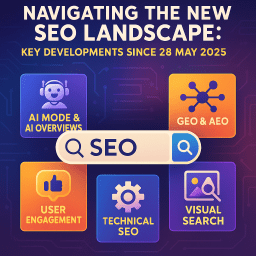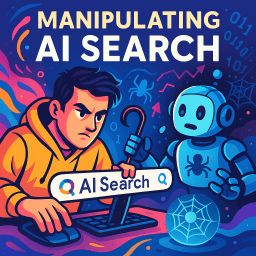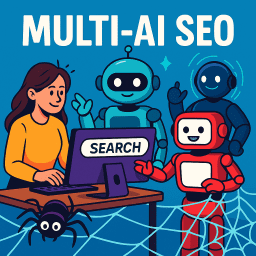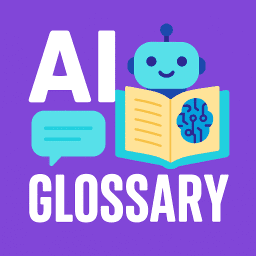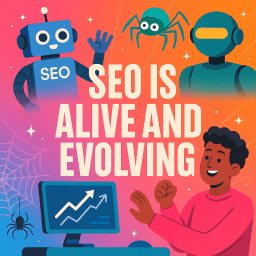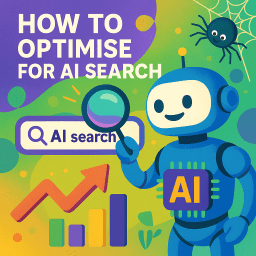Generative Engine Optimisation (GEO) Guide for 2025
How to rank in AI search engines like Gemini & ChatGPT
🤖 What Is Generative Engine Optimisation (GEO)?
Generative Engine Optimisation, or GEO, is the practice of optimising your content so that it performs well inside AI-driven search engines like Google AI Overviews, ChatGPT, Claude, and Perplexity.
These platforms are different from traditional search engines. Instead of returning a list of blue links, they generate answers to questions using content pulled from multiple sources – often without direct clicks to your site. GEO helps ensure your content is used, cited, and displayed in these AI-generated results.
🔍 How Does GEO Differ from Traditional SEO?
- SEO is about ranking on pages like Google Search or Bing through indexing and backlinks.
- GEO is about being used as a source inside AI answers or summaries, often without ranking at all.
This shift means your content has to be more accurate, clearly structured, and fact-rich – because AI tools need confidence to reference or summarise your pages.
🧠 Key Principles of GEO
- Authority & Trust: Use citations, link to reputable sources, and show expertise.
- Structured Content: Use bullet points, headings, and semantic HTML for easy parsing.
- Factual Accuracy: Keep content updated and correct to be selected by AI models.
- Direct Answers: Write like you’re answering a question – because AI is looking for answers.
- Entities & Context: Cover related topics thoroughly to help AI understand your niche.
📚 List of GEO Platforms You Need to Know
Here are the current major AI engines and platforms where GEO can help you gain exposure:
- Google AI Overviews – Shown in US and other countries inside Google Search
- Google Gemini (App & Web) – Direct Q&A and summarisation platform from Google
- ChatGPT (OpenAI) – AI assistant with web browsing and link citation (in Pro plan)
- Claude (Anthropic) – AI chatbot with document analysis and citation support
- Perplexity AI – A research-style engine with strong source attribution
- Microsoft Copilot (Bing Chat) – AI integrated into Bing and Microsoft 365
- You.com – AI-powered search with summarised responses and citations
- Brave Search Summariser – Open web answers with privacy focus
- Andi – Conversational search with visual responses and summarised results
- Arc Search (Browser AI) – Summarises search results inside the browser interface
⚙️ How to Optimise for Each GEO Platform
Google AI Overviews
According to Google’s Gary Illyes, showing up in AI Overviews doesn’t require anything special – just standard SEO best practices. That tracks logically: for Google to feature your content in AI Overviews, it first needs to crawl it with Googlebot and index it through the usual Google Search process.
The way content is discovered, understood, and ranked by Google Search also applies to AI Overviews and Google’s AI Mode. In fact, AI Overviews likely draw from many of the same ranking signals already used in traditional search.
In short: if you want to appear in AI Overviews, focus on doing good SEO as you normally would. Additionally, we suggest you also:
- Answer common questions clearly and directly
- Use proper H tags and structured layout
- Make use of schema markup to help define your content
ChatGPT (with browsing)
- Use factual, link-supported statements
- Break content into digestible sections with bullets
- Offer unique insights or useful summaries
Claude AI
- Claude values clarity and completeness
- Provide downloadable documents and high-quality HTML for analysis
Perplexity AI
- Ensure your site is indexable and has crawlable content
- Include sources and citations in your writing
- Use original, factual content that stands out
💡 Tools to Help With GEO
- GPTZero / Originality.ai – Check for AI-generated or overly generic content
- Surfer SEO – Helps with topical depth and structure
- InLinks – Focuses on entity-based optimisation and internal linking
- Geoptie – A specialised GEO tool for visibility tracking in AI platforms
- AlsoAsked / AnswerThePublic – Uncover real questions users ask
Also Read:
The Best GEO Tools for SEO in 2025 (Free & Paid Options)
🚧 Common GEO Mistakes to Avoid
- 🚫 Over-optimising for keywords instead of clarity
- 🚫 Ignoring facts or failing to cite sources
- 🚫 Focusing only on Google rankings—not AI citations
- 🚫 Using jargon or waffle that confuses AI models
- 🚫 Failing to update or expand evergreen content
📈 Measuring Success in GEO
Tracking GEO performance is tricky, because AI Overviews and AI chats don’t always send referral traffic. But here’s how to measure:
- 👁️ Mentions of your site in ChatGPT or Perplexity responses
- 🔗 Backlink alerts from tools like Ahrefs and Semrush
- 📊 Branded search volume increases over time
- 💬 Quoted snippets appearing in AI models or summaries
- 📥 User feedback and signups from non-Google sources
🗺️ Up Next: Build Your GEO Strategy
Now that you understand what GEO is and why it matters, it’s time to develop your own strategy. Start by:
- Auditing your top content pages for structure and clarity
- Improving factual accuracy and citation quality
- Expanding your content to cover related subtopics
- Using entity and schema tools to guide AI comprehension
- Publishing helpful content that answers real user questions
💬 What the Experts Are Saying
“The future of SEO is not just ranking—it’s being used in answers.”
— Rand Fishkin, SparkToro
“GEO is where authority meets usability. Write like you’re solving problems.”
— Aleyda Solís, SEO Consultant
“AI systems don’t cite fluff – they use clear, structured content backed by facts.”
— Lily Ray, Amsive Digital
“Search has evolved. If you’re not optimising for AI discovery, your content is invisible.”
— David Roche, The SEO Guide Book
🧩 Final Thoughts
Generative Engine Optimisation is not just another SEO trend – it’s a fundamental shift in how visibility, relevance, and content discovery work in the age of AI-driven search. As platforms like ChatGPT, Claude, Perplexity, and Google’s AI Overviews become mainstream tools for information retrieval, it’s essential that your brand and content adapt accordingly.
Instead of fighting the tide, smart digital marketers and business owners are learning to work with these systems – crafting content that’s not only informative and well-structured, but also useful in the eyes of AI engines that summarise, reference, and interpret it for users.
The key is to think beyond blue links and keyword stuffing. GEO is about building content ecosystems: clear, consistent, trusted, and accessible information that aligns with how people (and AI) search today. And tomorrow.
Whether you’re a solo entrepreneur, a digital strategist, or a large publisher, embracing GEO now puts you ahead of the curve – while others scramble to catch up.
So here’s the bottom line: GEO is not optional. It’s the new reality of online visibility. Understand it, apply it, and lead with it – and your content won’t just survive, it will thrive in the era of AI-powered search.
❓ FAQs
What does GEO stand for?
GEO stands for Generative Engine Optimisation. It refers to optimising content so it’s selected and used inside AI-generated responses.
Is GEO replacing traditional SEO?
No, but it complements it. Traditional SEO helps you rank in Google. GEO helps you get cited and seen in AI engines.
What kind of content works best for GEO?
Content that’s accurate, fact-based, well-structured, and written in a helpful tone. Think tutorials, answers, summaries, and overviews.








